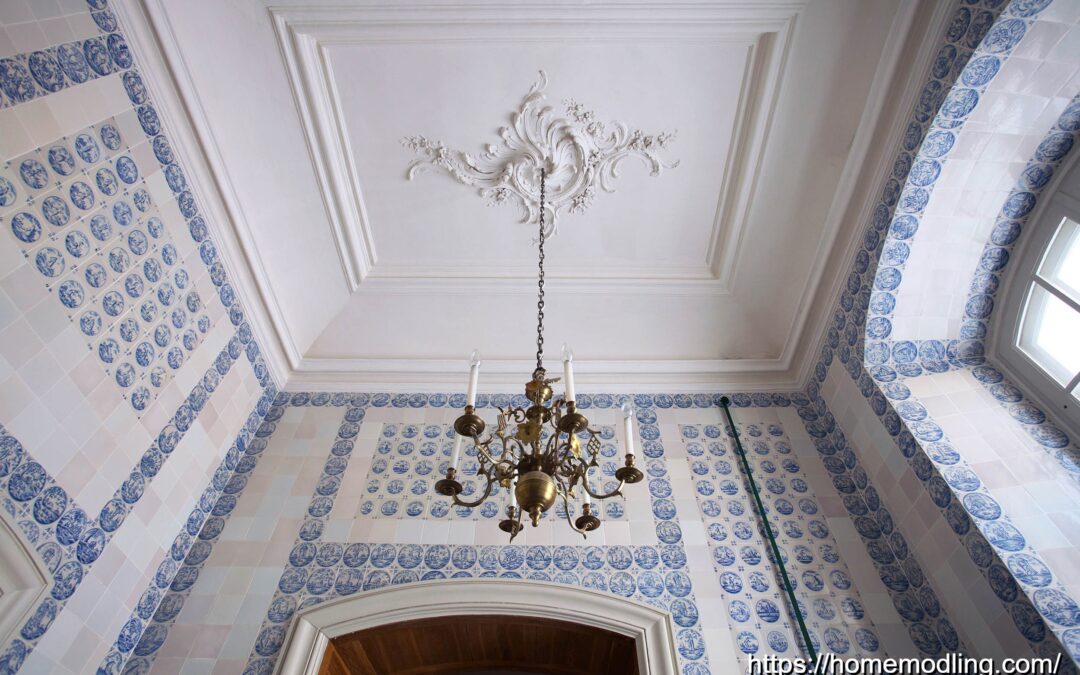Delft tiles, renowned for their exquisite blue and white designs, have left an indelible mark on architectural history. Originating in the Dutch city of Delft during the 17th century, these ceramic tiles became synonymous with elegance and craftsmanship, adorning the interiors of palaces, churches, and homes across Europe and beyond. This article takes you on a journey through iconic buildings where Delft tiles have made a lasting impression.
1. Origins and Characteristics of Delft Tiles:
Delft tiles, inspired by Chinese porcelain, first gained popularity in the Netherlands during the Dutch Golden Age. Made from earthenware and adorned with intricate blue motifs, these tiles typically depict pastoral scenes. Formal patterns, maritime themes, and even biblical narratives. Each tile is hand-painted before being glazed and fired, resulting in a distinctive glossy finish.
2. The Royal Palace of Amsterdam:
One of the most notable examples of Delft tiles in architecture is found in the Royal Palace of Amsterdam. Built as a city hall in the 17th century, the palace boasts a grand interior adorned with Delft tiles featuring elaborate designs. These tiles, lining walls and fireplaces, showcase the opulence and artistic finesse characteristic of the Dutch Golden Age.
3. The Rijksmuseum, Amsterdam:
The Rijksmuseum, a celebrated repository of Dutch art and history, features Delft tiles in its architectural elements. Particularly in the museum’s library and period rooms, Delft tiles contribute to the authentic ambiance, transporting visitors back to the era of Rembrandt and Vermeer. These tiles not only enhance the visual appeal but also serve as historical artifacts in their own right.
4. The Church of Our Lady, Delft:
Nestled in the heart of Delft, the Church of Our Lady (Niue Kirk) showcases Delft tiles in its interior décor. The church, known for its impressive Gothic architecture, incorporates Delft tiles in its chapels and floors, adding a touch of elegance and cultural heritage to its sacred spaces. These tiles reflect both religious motifs and secular themes, illustrating their versatility in architectural settings.
5. Dutch Colonial Architecture in Indonesia:
Beyond Europe, Delft tiles left their mark in Dutch colonial architecture, particularly in Indonesia. Buildings such as the former Dutch Governor’s residence in Batavia (Jakarta) feature Delft tiles as part of their colonial-era interiors. These tiles not only adorned walls but also served as status symbols, reflecting the wealth and influence of the Dutch East India Company during the 17th and 18th centuries.
6. Contemporary Applications and Revival:
In contemporary architecture and interior design, Delft tiles continue to inspire and influence. Designers and homeowners worldwide integrate Delft tiles into modern spaces, blending traditional craftsmanship with contemporary aesthetics. Whether used in kitchens, bathrooms, or accent walls, Delft tiles add a timeless allure and a sense of cultural heritage to any environment.
Preserving a Cultural Legacy:
The enduring appeal of Delft tiles lies in their ability to transcend time and geography, embodying centuries of artistic tradition and cultural exchange. From grand palaces to humble dwellings, these tiles have adorned architectural masterpieces with their beauty and craftsmanship. As custodians of this cultural legacy, architects, historians, and enthusiasts alike continue to celebrate and preserve the legacy of Delft tiles, ensuring that their exquisite artistry endures for generations to come.
Conclusion:
Delft tiles in architecture represent more than just decorative elements; they encapsulate a rich tapestry of history, craftsmanship, and artistic expression. From the majestic halls of European palaces to the colonial residences in distant lands, Delft tiles have left an indelible imprint on architectural landscapes worldwide. Their timeless allure continues to captivate and inspire, bridging the past with the present in a celebration of beauty and cultural heritage.
In exploring the journey of Delft tiles through iconic buildings, we not only appreciate their aesthetic charm but also recognize their profound influence on architectural and decorative arts across centuries.

